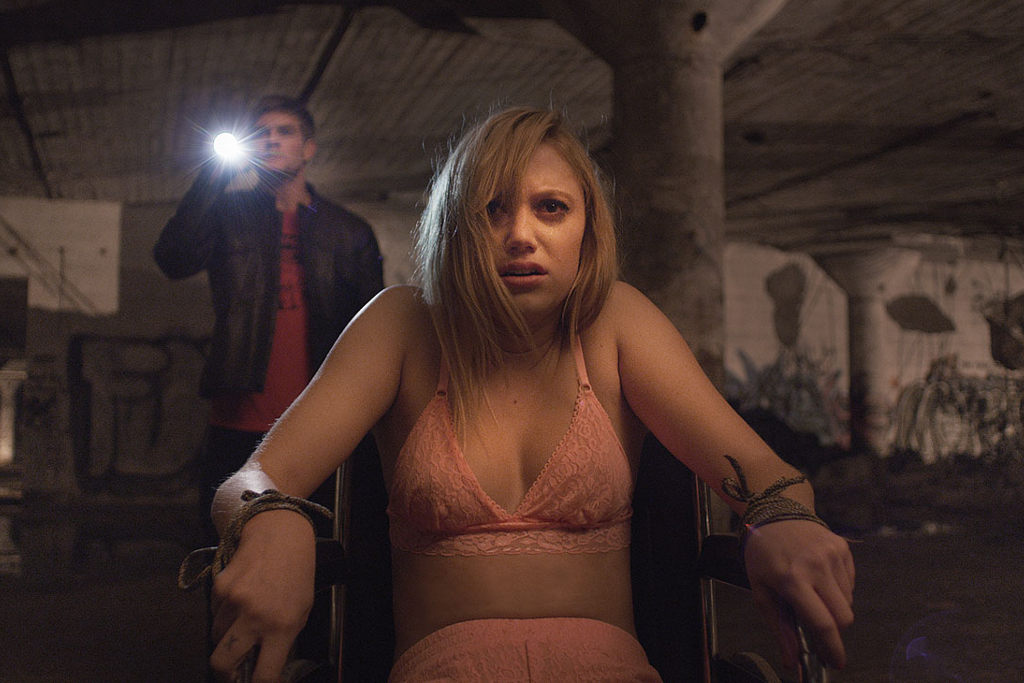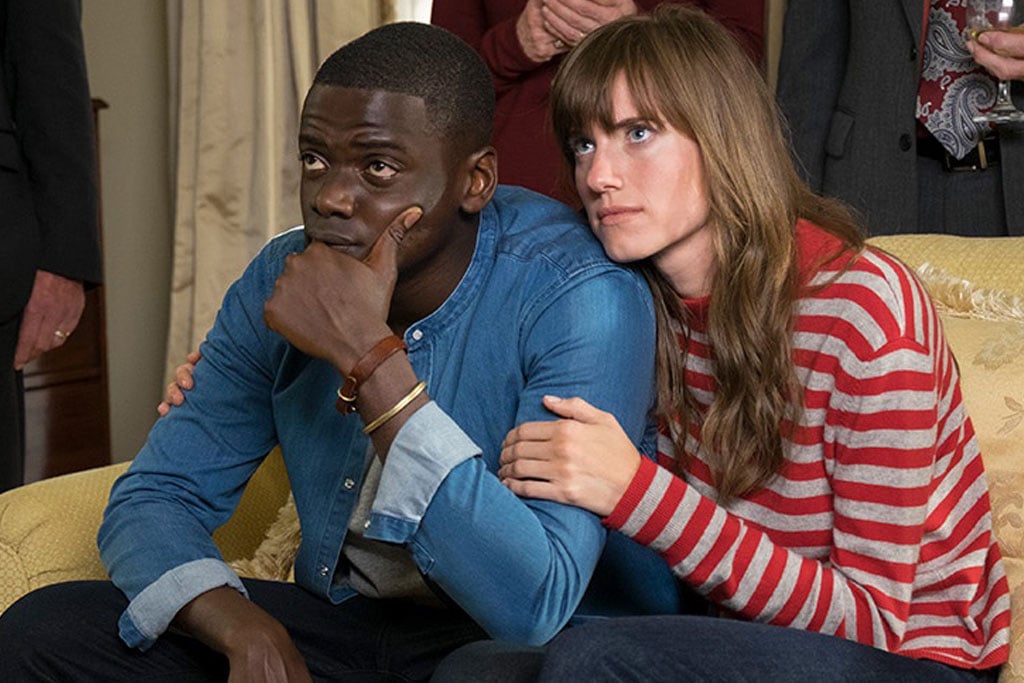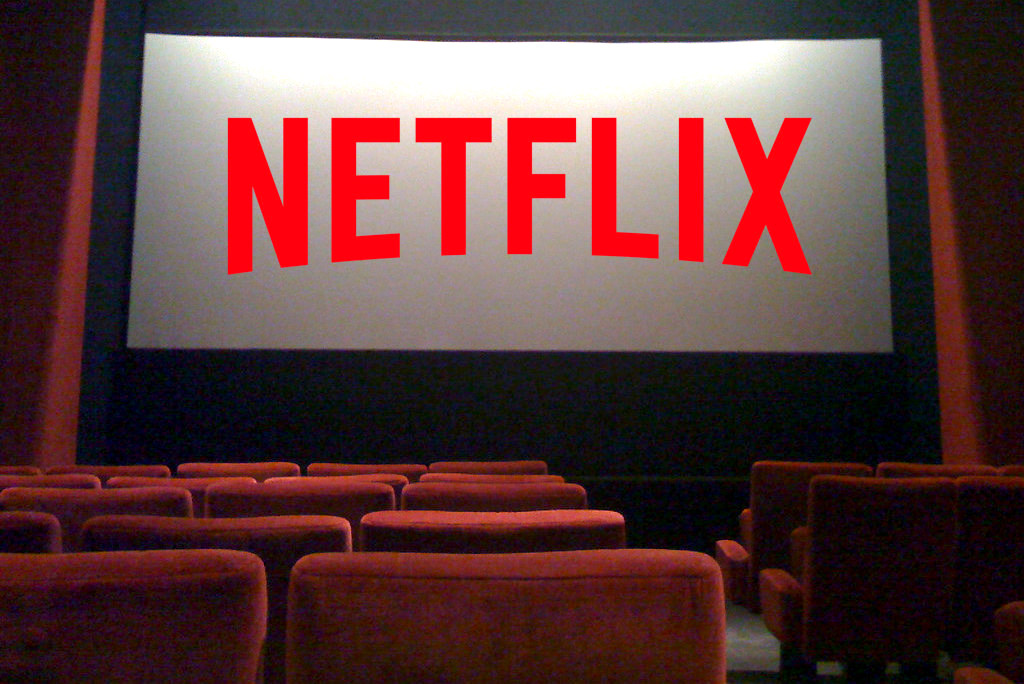Is 2017 The Year Australia Finally Gets On Board With Horror?
We asked filmmakers, programmers, academics and more.
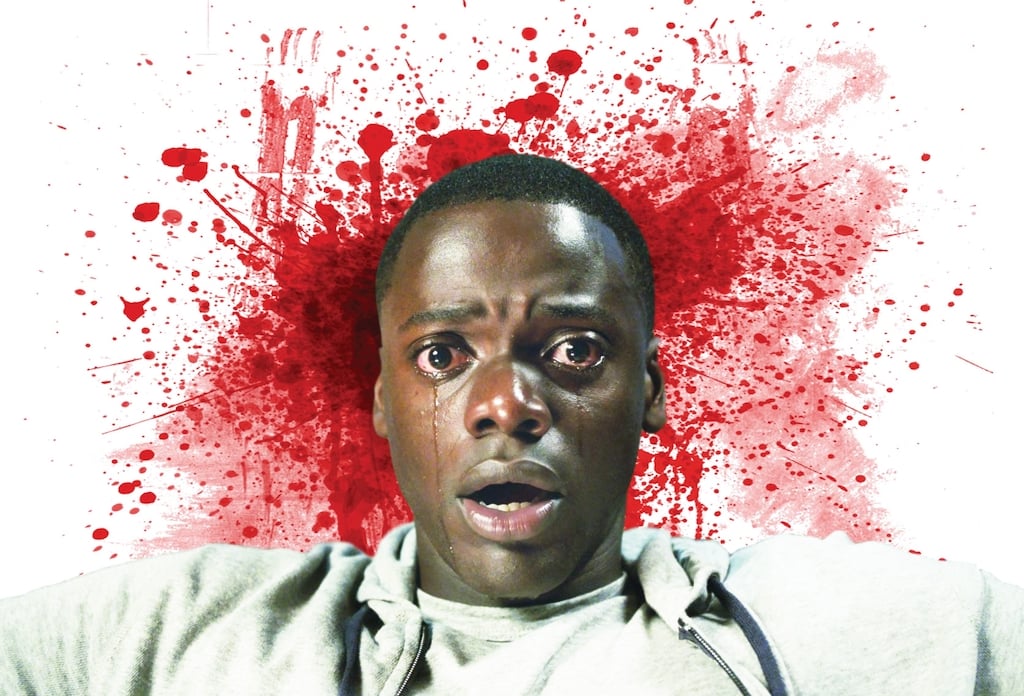
“A future where horror films bypass the big screen altogether is a frightening prospect indeed.”
That’s how I ended my 2015 article on horror films’ perceived unpopularity. At the time, it seemed like Australia was doomed to DVD-only releases of most horror films, with distributors and cinema programmers alike lamenting the genre’s dismal reputation with Aussie cinemagoers.
Two years later, that future has thankfully not come to pass. 2017 has seen horror films dominate the box office locally, doing almost as well as they have in the US. It is the ninth highest-grossing film of the year (so far), outperforming the latest iterations of the Transformers, Planet of the Apes and Pirates of the Caribbean franchises. It’s joined by the likes of Annabelle: Creation, Get Out and Split, all earning serious coin in our neck of the woods.
Even smaller scale, local horror productions have earned (limited) theatrical releases that resist the “Aussies hate horror” narrative. Cate Shortland’s Berlin Syndrome, Ben Young’s Hounds of Love and Damien Power’s Killing Ground all made their way to cinemas despite their stomach-churning subject matter and modest budgets. There’s a glimmer of light shining through these theatres’ thick curtains.
On the face of it, it seems like I overstated Australian distributors’ reluctance to release horror movies, and local cinemas’ reluctance to program them. Or, maybe, the genre is simply trending upwards. But is Australian audience’s disinterest in horror films a myth? A folk tale, reinforced by mediocre marketing? A lie uncovered by the spectacular success of It, which suggests that audiences will turn up in droves if there’s a big marketing push (and, sure, a recognisable property)? Or is there some skerrick of truth behind our nation’s apparent scorn of scary movies? And — perhaps most importantly — how does this bode for the future of horror filmmaking, particularly locally?
The Australian Box Office Massacre
I should pre-empt this with a proviso: honestly, I don’t really give a shit about the box office. As Martin Scorsese noted in a recent piece for The Hollywood Reporter, box office reports have become “everything” in modern film discourse, and not for the better. A good film is a good film no matter how little money it takes in.
With that disclaimer out of the way, box office results are important to the prospects of future films getting released or produced. Horror films are traditionally relatively safe because of their comparatively low budgets (It’s earned over $600 million off a $35 million budget), but the takings of those three Aussie flicks I mentioned before don’t make for heartening reading. Berlin Syndrome, Hounds of Love and Killing Ground’s cumulative take — that is, all three films added together — just barely clears $300,000. Hardly encouraging figures for horror aficionados.
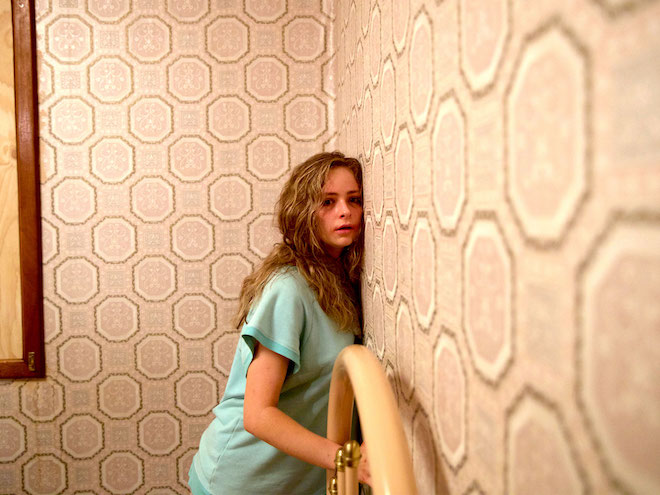
“If you’re talking about general audience trends then, yes, horror’s not as strong as other genres,” says Grant Hardie. He should know. Hardie’s the executive producer, business director and co-founder of Monsterfest, which bills itself as “Australia’s premier genre film festival”. Monsterfest is a great avenue for horror fans to see these films in cinemas, but their sales unfortunately don’t count towards those anaemic box office grosses.
Despite acknowledging the mainstream bias against horror, Hardie is quick to assure me that it’s not all doom and gloom. “If you’ve got the right sort of film, a film that works — as It and Get Out have proven, then people will definitely go out and see them. It’s developing new audiences. Anything that brings new people to horror — whether it be It, whether it be Get Out — is a great thing. Because there’s only a certain amount of product that’s available via theatrical release that can satisfy them. If it’s creating a new fan, then that fan starts to go looking.”
Smart programmers are increasingly finding ways to cater to these fans outside of traditional releases. Take Brisbane’s New Farm Cinemas. After opening in mid-2014, the indie cinema collaborated the following year with Monsterfest for Friday Fright Nights — weekly screenings of weird or cult horror like The Texas Chainsaw Massacre 2 and Body Melt. Since then, they’ve made an effort to screen smaller genre films even if only once or twice. Especially if they’re Australian.
“From our perspective, we do like to screen films that cater to all markets,” says Peter Sourris, co-owner of New Farm Cinemas (and the recently-opened Elizabeth Picture Theatre). “That’s been proven by [the response to] horror films that we have played over time, whether they’re independent horror films or mainstream films like Get Out.” By keeping a database of local horror fans, Sourris is able to find an audience for scary movies beyond the big ‘uns.
“In some states it’s damn near impossible to get anyone to see [a budget Australian horror film].”
The shift of theatres towards more unconventional release strategies is paying dividends for horror fans and filmmakers too. Joseph Sims-Dennett is one of many Australian horror directors avoiding the beaten path. His 2015 feature, Observance, premiered at Montreal’s Fantasia Film Festival to rave reviews. Produced on a “credit card budget”, the film avoided a traditional theatrical release in Australia in favour of Q&A event screenings hosted by FilmInk.
“I knew with Observance that we had extremely limited resources but we knew that there was an audience,” says Sims-Dennett. “So, our decision was to make the screenings an event, pack out the ones that we were able to book and make money and generate buzz in one hit as opposed to a theatrical run with empty screens. Thankfully it worked and we sold out most of the screenings but it was insanely hard work … After the exhibitors as well as the theatrical partners and distributor took their cuts we ended up making not all that much.”
“The problem is that it’s hard to get national press with a limited release, and so we had to hit as many states as possible, even though in some it’s damn near impossible to get anyone to see a film like this … We ended up doing really well on home entertainment, especially VOD, and Umbrella made a sale to Channel 9 which was really great for us.
“I guess theatrical in Australia can bring you financial success later down the release timeline, so I’ve been quite pleased even though none of us have been able to buy a Ferrari off the back of it.”
Funding Fears
While Sims-Dennett produced Observance independently, he credits the support of Screen Australia as crucial to the success of his subsequent marketing campaign. In Australia, that’s generally how it works. Our local industry relies on federal and state funding bodies, whether you’re making a schlocky slasher or a lilting indie drama. So how ready are these organisations to get behind horror?
If you talk to Dr Donna McRae — a lecturer on Film & TV at Deakin University who also just so happens to be a horror director — she’ll tell you these bodies are quite supportive. McRae’s new film, Lost Gully Road, has its world premiere at this year’s Monsterfest (along with a host of other Aussie films), and the film’s production was contingent on the financial support of Film Victoria.
“I feel that the funding bodies are leaning a little way toward genre these days.”
“Getting the Film Victoria support is very heartening,” explains McRae, “to know that they have supported horror, in the face of the idea that Australian audiences don’t. I feel that the funding bodies are leaning a little way toward genre these days — certainly sci-fi is being supported to a point.”
At the same time, McRae’s clear about the expectations for the release of micro-budget horror films like Lost Gully Road. “Working in the horror genre is twofold: this market doesn’t mind low-budget films (mine is really no-budget – $45,000) and if the film is good it will find an avenue within distribution somewhere. It would be wonderful to have a theatrical season, but that would be quite unusual — making a no budget horror is really for the distro market only.”
Not all Australian filmmakers are able to get funding to make horror films over here. As he explained at last year’s Sydney Film Festival, Australian director Sean Byrne had to head overseas to produce his second feature, The Devil’s Candy, despite the success of his debut, The Loved Ones. Craig Anderson — whose horror flick Red Christmas premiered at the same SFF — had a similarly tough time nailing down local support for his feature film debut, despite an extensive television résumé (including two AACTA Awards).
He credits that difficulty to an aversion to horror from Australian funding bodies. “I soon worked out that the horror market is global and that’s what I need to focus on,” Anderson says. “I think [Australian] funding bodies are a little under-equipped to deal with genre filmmaking — I can’t tell you the amount of people in prominent positions who have told me that they can’t watch horror films. Which when you think about it, is really embarrassing.
“I can’t tell you the amount of people in prominent positions who have told me that they can’t watch horror films.”
“They, of all people, should know that ‘it’s only a film’. Imagine someone in charge of government funding for the textile industry who kept refusing to look at cardigans because they don’t like them. Not that I expected funding from them, but sometimes you need guidance. I remember one particular call with a high-up government worker who flicked through a catalogue of distributors and picked out ones that ‘sounded like they did horror, based on the name’. Crikey.”
Historical under-appreciation of homegrown horror certainly isn’t a new phenomenon in Australia. Our country is notorious for disregarding fantastic genre films made locally … at least until they succeed overseas. Emma Westwood, a film broadcaster, commentator and author of an upcoming book on David Cronenberg’s The Fly, agrees.
“It’s a trend in Australia that has been happening for decades and sadly continues,” Westwood laments. “Umbrella Entertainment recently released the 1987 Australian monster croc film, Dark Age, on Blu-ray, which is a terrific film that never even received a cinematic release in Australia at the time. This is a trend that continues in Australia — it takes an overseas audience to tell us how good our films are.”
McRae also acknowledges that the problem with selling Australian horror is as much to do with the Australian part as the genre. “I think that Australian films are a tough sell generally. And always have been — I worked in a cinema for ten years and it was really hard to get anyone in — as soon as they knew it was Australian, they walked away. So that’s really the problem, not just horror.”
… What Happens Now?
It’s hard to fathom that attitude from audiences, given the quality of our local product, but Aussies’ cinematic cultural cringe has never made a lot of sense.
Whatever hostility might be facing local horror filmmakers, the genre has been a springboard to success for many. James Wan steered the success of Saw into a series of successful horror franchises (Insidious, The Conjuring and its spinoffs) and even got into the driver’s seat for Fast & Furious 7.
The Babadook’s Jennifer Kent is working on her second feature, titled The Nightingale. The Spierig brothers — of Daybreakers and Predestination fame — are taking the reins for the Saw reboot, Jigsaw. And only recently Wyrmwood: Road of the Dead boys Kiah and Tristan Roache-Turner begun production in Sydney on sci-fi horror Nekromancer, starring Monica Bellucci.
It’s hard to tell what’s in store for horror in Australia; perhaps we’ll see a string of carefully-curated studio successes in the wake of It; perhaps It’ll just be chalked up as an anomaly. Regardless, the precarious state of the local industry gives horror fans plenty of reasons to be optimistic and pessimistic.
Still, I’m erring on glass half-full. The increasing prominence of horror will hopefully give local funding bodies, distributors and cinema chains alike more confidence to invest in the genre, and get great horror films — whether Australian, independent, or big budget — into cinemas. I know I’ll be waiting in line.
–
Dave Crewe is a Brisbane-based teacher and freelance film critic who spends way too much of his time watching movies. Read his stuff at ccpopculture or pester him at @dacrewe.
